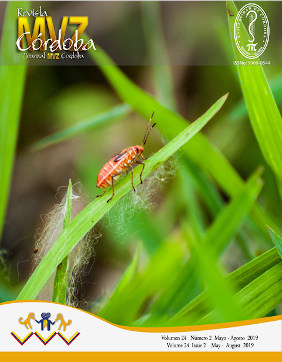Superovulatory response in Brahman donor cows using follicular ablation before superovulation protocols
Respuesta superovulatoria en vacas donantes Brahman usando ablación folicular previo a protocolos de superovulación
Show authors biography
Objective. The objective of this study was to determine the effect of follicular ablation at the beginning of a superovulation protocol (SOP) on the superovulatory response of Brahman donor cows. Materials and methods. Twenty Brahman cows were used, randomly distributed in two groups: control group (G1, n = 10), synchronization of the follicular growth wave was performed by the combination of estrogens (2.5 mg, estradiol benzoate) and progestagens (1 gr intravaginal implant); four days after starting the SOP with porcine follicle stimulating hormone (FSHp); and the ablation group (G2, n = 10), follicular ablation was performed and one day after, the SOP treatment with FSHp was initiated. In both groups, embryo collection was performed seven days after the first artificial insemination. Results. The G2 had a higher proportion of quality 1 embryos (p<0.01) compared to G1 (68.60% vs. 31.22%), while animals of G1 group had a higher proportion of quality 2 embryos (43.04% vs. 18.60%, p<0.01). For the total of structures collected and the total of transferable embryos, no significant differences were observed (p>0.05). Conclusions. Follicular ablation increased the percentage of quality 1 embryos, suggesting that the implementation of this technique, as a strategy to synchronize the beginning of a new wave of follicular growth when using SOP, improve embryo quality in Brahman donor cows.
Article visits 1819 | PDF visits
























